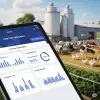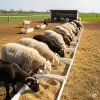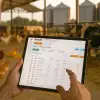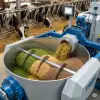The Impact of Raw Material Price Fluctuations on Feed Costs in Feed Mills
Explore the impact of raw material price fluctuations, one of the biggest cost items for feed mills, on feed costs and the strategies that can be implemented to counter this situation.
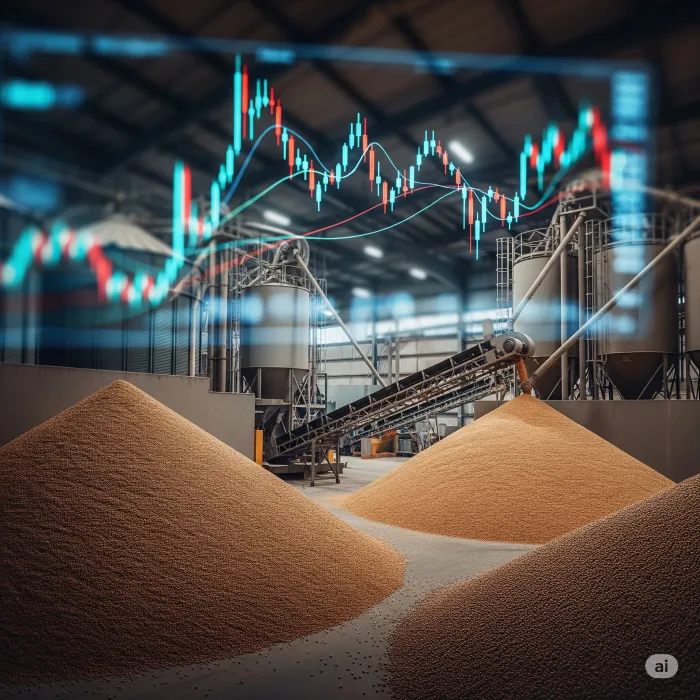
The Impact of Raw Material Price Fluctuations on Feed Costs in Feed Mills
The feed industry is directly linked to the production of feed, a fundamental input for livestock, and one of the largest cost items in this sector is **raw material prices**. Fluctuations in global agricultural product markets deeply affect the cost structures of feed mills and, consequently, the final product prices. So, how do these raw material price fluctuations impact feed costs, and what strategies can feed mills implement to counter this situation?
Reasons for Raw Material Price Fluctuations
Many global and local factors lie behind fluctuations in raw material prices:
1. **Climate Change and Weather Conditions:** Adverse weather conditions such as drought, floods, and excessive rainfall directly affect agricultural production. Reduced yields lead to a decrease in supply, causing prices to rise.
2. **Global Supply and Demand Balance:** The increasing global population and rising consumption of meat and dairy products increase the demand for feed raw materials. If supply cannot meet demand, prices will rise.
3. **Energy Prices:** Energy costs play a significant role in agricultural production (fertilizers, irrigation, machinery use) and in the transportation of feed raw materials. Increases in oil and natural gas prices indirectly push up feed raw material prices.
4. **Geopolitical Developments and Trade Policies:** Political tensions between countries, trade wars, embargoes, or tariffs can disrupt the flow of raw materials, leading to price volatility.
5. **Exchange Rate Movements:** Increases in foreign exchange rates for imported raw materials directly raise costs in local currency.
6. **Speculation and Financial Markets:** Speculative transactions on commodity exchanges can lead to sudden and large price fluctuations, independent of the supply-demand balance.
7. **Diseases and Epidemics:** Animal or plant diseases can reduce the supply of certain raw materials or change demand.
Impact on Feed Costs
Increases in raw material prices directly translate to increased costs for feed mills. Since a large portion of feed formulations (typically 70-85%) consists of raw materials, these fluctuations put significant pressure on profitability.
- **Increased Production Costs:** Rising raw material prices directly increase feed production costs. This situation may necessitate reflecting the increase in the selling price of the final product, feed.
- **Decrease in Profitability:** In cases where the entire price increase cannot be passed on to the final product, the profit margins of feed mills narrow.
- **Reduced Competitiveness:** Mills producing at high costs may lose competitiveness against rivals offering more affordable feed.
- **Formulation Changes:** To balance costs, there may be a need to switch to cheaper alternative raw materials in feed formulations. However, this should not negatively affect the nutritional value or digestibility of the feed.
- **Inventory Management Challenges:** Price fluctuations create uncertainty regarding how much raw material to stock. Excess inventory increases the risk of loss during price drops, while low inventory can lead to production disruptions during price increases.
Strategies Feed Mills Can Implement
Feed mills can develop various strategies to minimize the negative effects of raw material price fluctuations:
1. **Flexible Formulation:**
- **Use of Alternative Raw Materials:** Making feed formulations flexible to use the most affordable raw materials in the market without compromising nutritional value. This can be continuously optimized with specialized formulation software.
- **Broader Raw Material Portfolio:** Creating a wide portfolio of raw materials that can be sourced from different origins, reducing dependence on a single raw material.
2. **Risk Management and Price Hedging:**
- **Futures and Options:** Using futures contracts or options in commodity markets to lock in future prices today. This can act as a hedge against price fluctuations.
- **Long-Term Purchase Agreements:** Entering into long-term, fixed-price or price-range covering contracts with reliable suppliers.
3. **Efficient Inventory Management:**
- **Optimized Inventory Levels:** Determining optimal inventory levels by considering market conditions and consumption rates. This reduces storage costs while ensuring production continuity.
- **"Just-in-Time" Approach:** Minimizing inventory costs by procuring raw materials precisely when needed, as much as possible.
4. **Energy Efficiency and Production Optimization:**
- As mentioned in our previous blog posts, reducing energy consumption and optimizing production processes (automation, modern equipment) alleviates overall cost pressure by lowering expenses outside of raw material costs.
5. **Good Relationships and Market Monitoring:**
- **Strong Relationships with Suppliers:** Building good relationships with reliable and flexible suppliers can provide an advantage in raw material procurement during difficult times.
- **Continuous Market Monitoring:** Taking proactive decisions by closely following developments in global and local raw material markets, climate reports, geopolitical events, and exchange rates.
Conclusion
Raw material price fluctuations are an unavoidable reality for feed mills. However, with the right strategies, the negative effects of these fluctuations can be significantly reduced. Methods such as flexible formulation, smart risk management, efficient stocking, and continuous market monitoring will enable feed mills to survive and maintain profitability in these challenging conditions. This way, a more stable and reliable feed supply can be provided to the livestock sector.

